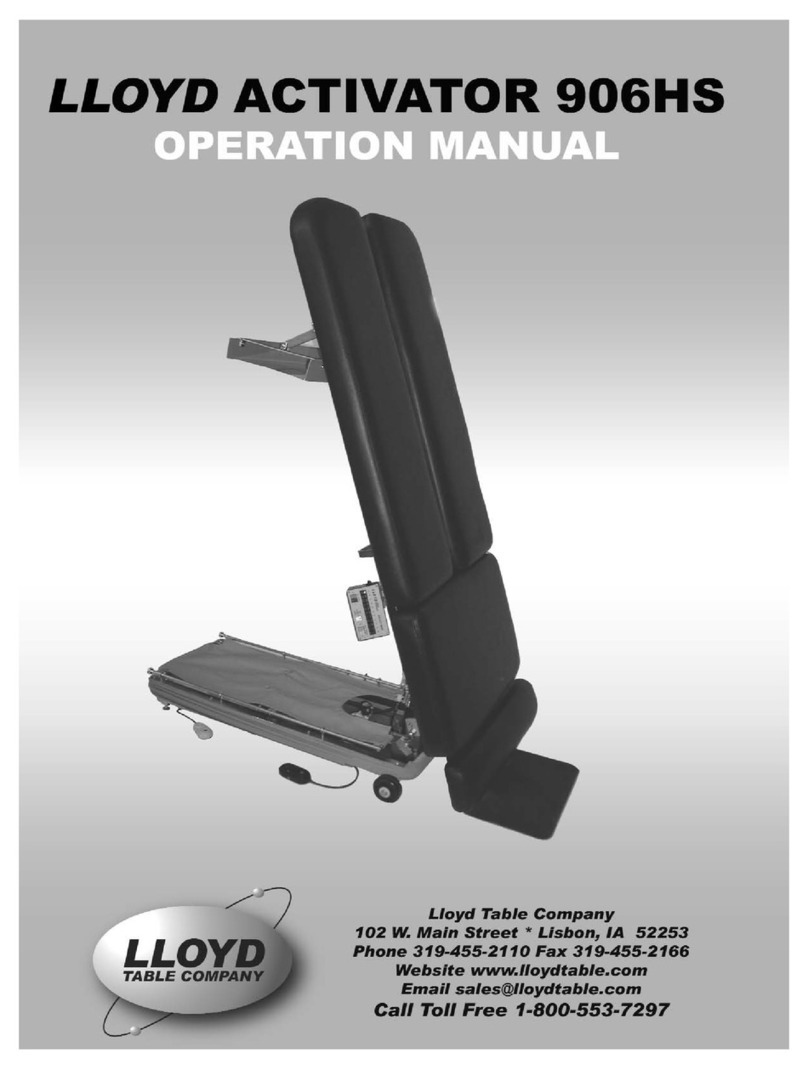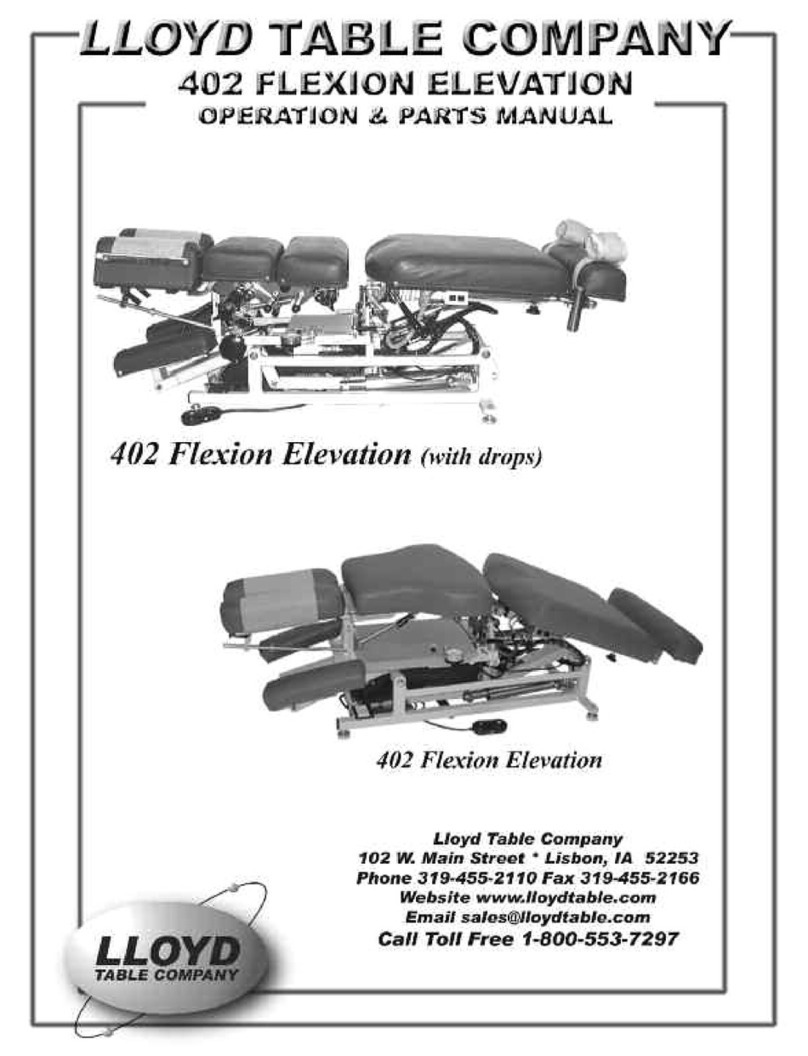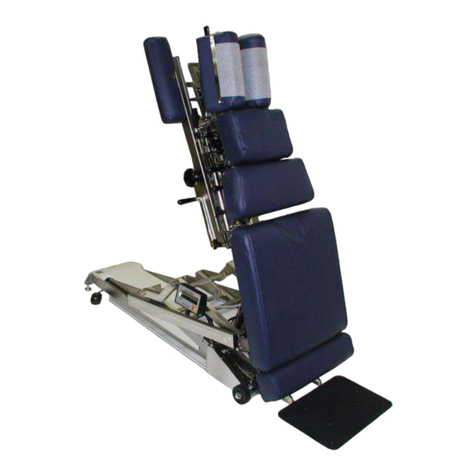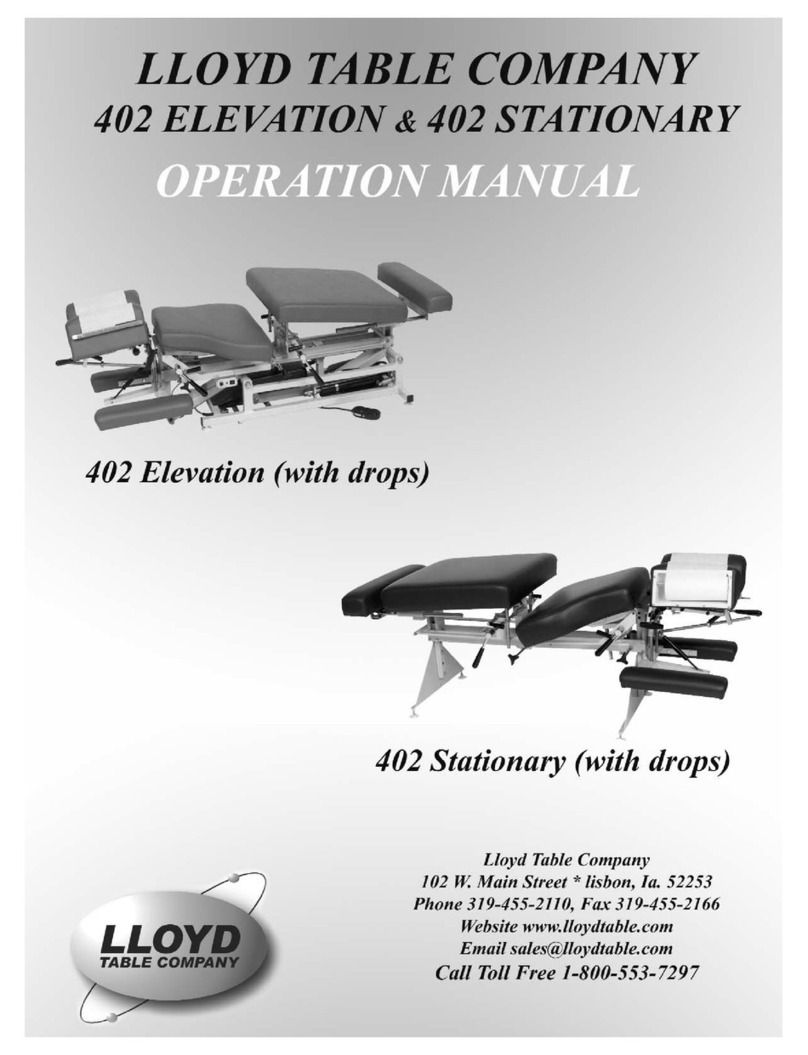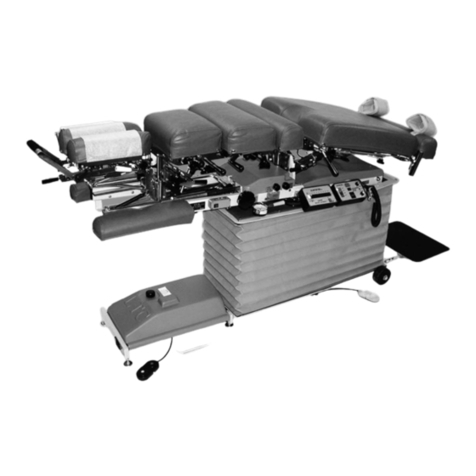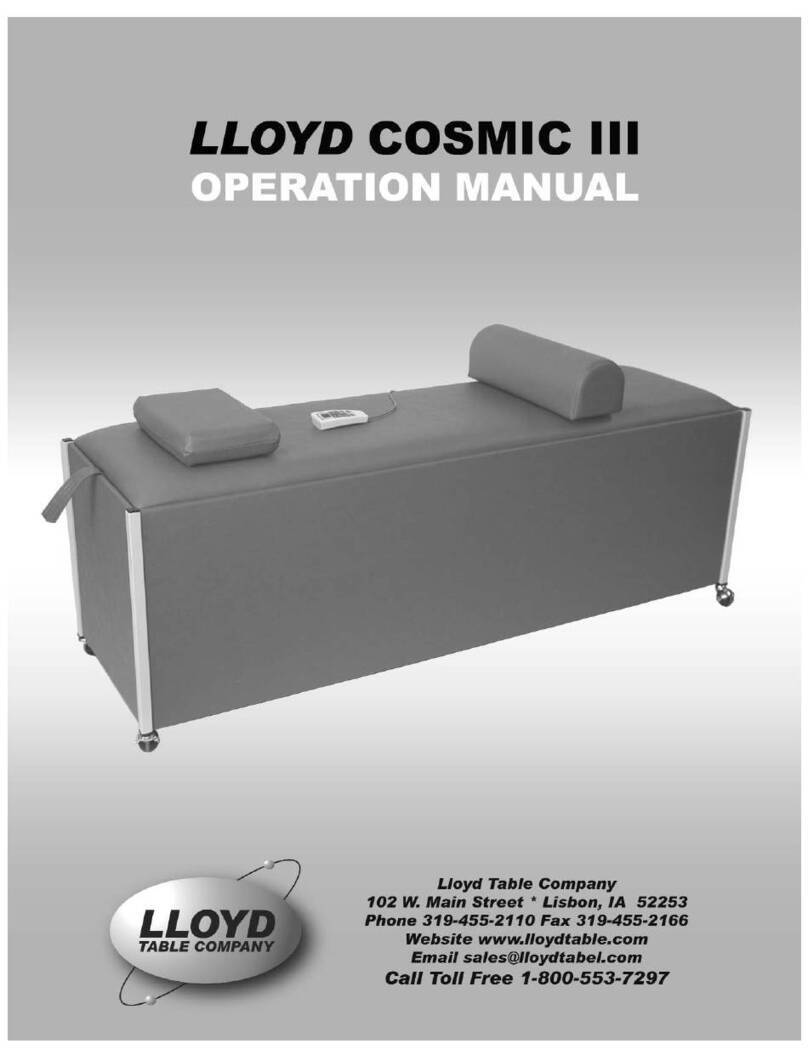CONTENTS
OPERATIONS PAGE
Safety and Maintenance................................. 1 - 2
Head Rest Cushion......................................... 3 - 7
Chest Cushion................................................. 8
Manual & Automatic Drops........................... 9 - 11
Head & Chest Extension / Retraction............ 11
Pelvic Cushion - Flexion............................... 12 - 16
Pelvic Lateral Side Bending.......................... 16
Pelvic Rotation & Telescoping T-Bar........... 17
Ankle Rest & Lumbar Extension................. 18
Control / Indicator Box................................. 19 - 20
Tilt Safeguard................................................ 20
Pelvic Extension /Retraction Switch............. 21
Foot Pedal Control........................................ 21
Master Power Switch & Fuses...................... 22
PARTS / ASSEMBLY PAGE
22” Frame .................................................... 23 - 24
24” Frame..................................................... 25 - 26
Deluxe Head Frame...................................... 27
Deluxe Head Cushion................................... 28
Deluxe Head I-Frame.................................... 29 - 30
Chest Cushion Assembly............................... 31 -32
PARTS / ASSEMBLY PAGE
Pelvic Cushion Non-Rotation....................... 33
Telescoping T-Bar......................................... 34
Ankle Rest Adjustable Height...................... 35
Foot Plate Assembly...................................... 36 - 37
Covers ........................................................... 38
Hydraulics ..................................................... 39 - 42
Electrical Assembly...................................... 43 - 44
Straight Drop Head....................................... 45 - 46
Forward Motion Drop Head......................... 47 - 48
Flexion Head Cushion Assembly................. 49 - 50
Flexion Head - Shuttle Assembly................. 51 - 52
Flexion Head - Slide Frame.......................... 53 - 54
Flexion Head Rotation Block....................... 55 - 56
T - Drop Chest .............................................. 57 - 58
Drop Chest & Lumbar.................................. 59 - 60
Rotation Drop Chest Frame.......................... 61 - 62
Rotation Drop Chest Cushion ...................... 63 - 64
T-Drop Pelvic (Non Rotation)....................... 65 - 66
T- Drop Pelvic (Rotation)........................... 67 -68
Electrical Diagram ....................................... 69-74
Table Serial Number






